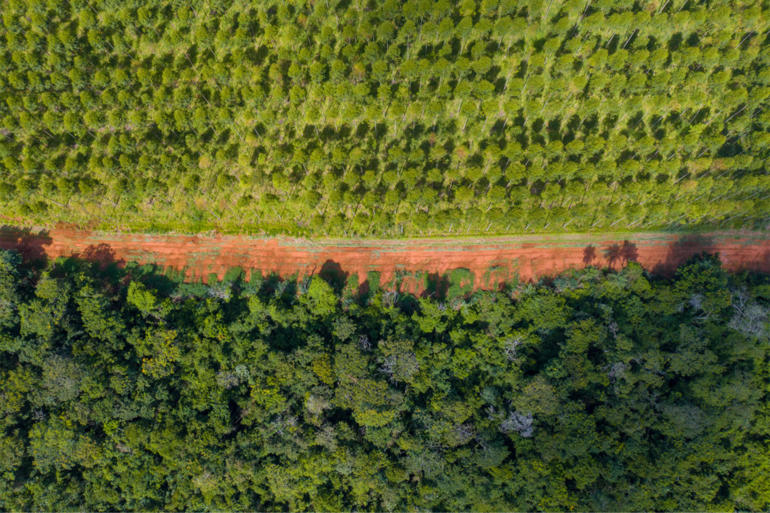Background
Climate change poses one of the most significant global threats the world has ever faced. Climate change negatively impacts terrestrial, freshwater and marine ecosystems and the communities that rely on them, with some ecosystems projected to turn from carbon sinks into carbon sources. To protect these natural carbon sinks, it is imperative to tackle climate change and biodiversity loss together.
Nature-based solutions offer effective mechanisms for reducing and removing carbon from the atmosphere through the protection, improved management and restoration of nature. Forests, wetlands and grasslands store carbon pulled from the atmosphere in their soil, roots and branches. Researchers estimate that tropical forests hold more carbon than humans have produced over the last 30 years by burning coal, oil and natural gases.
Innovative partnership
Apple has spent the greater part of the last decade working to reach its goal of decarbonizing its entire carbon footprint by 2030, in line with its science-based target and efforts to limit warming by 1.5°C. By the end of 2022, Apple reduced its overall emissions across scopes 1, 2, and 3 by over 45 percent compared with its 2015 baseline year. And looking forward to 2030, it aims to reduce emissions across all scopes by 75% from its base year of 2015.
In more recent years, Apple has sought innovative, high-impact and scalable ways to balance any direct emissions across not just its own corporate operations, but its entire supply chain for its products (scope 3) as part of its 2030 goal. In 2021, Apple partnered with Conservation International and Goldman Sachs to launch the Restore Fund, committing up to USD $200 million of Apple capital to remove carbon from the atmosphere while generating long-term financial returns. This initial fund pairs carbon credit and revenue generation by focusing on restoring working forests, while protecting and restoring native forests, grasslands and wetlands. In addition to being a co-investor in the fund and an existing partner in Apple’s conservation efforts, Conservation International is responsible for ensuring that each project meets strict environmental and social standards in addition to the carbon impacts of the fund. Goldman Sachs serves as the fund’s investment manager and provides financial and operational due diligence.
In April 2023, Apple expanded the Restore Fund to include another commitment of up to an additional USD $200 million into a new portfolio managed by Climate Asset Management (a joint venture between HSBC Asset Management and Pollination). Unlike the initial fund, this new commitment decouples financial returns and climate benefits by blending two distinct investment strategies: on the one hand, the vehicle will invest in revenue-generating nature- forward and sustainable agriculture projects; on the other hand, it will originate and invest in high-quality carbon projects that conserve and restore critical ecosystems that are unlikely to generate financial returns.
As part of its 2030 goal, Apple has asked its suppliers to decarbonize their entire Apple footprint by first transitioning to renewable energy to reduce their emissions and improve their energy efficiency. To help with remaining emissions, the Restore Fund also offers Apple suppliers the opportunity to become fund partners and incorporate high-impact carbon removal projects as they decarbonize.
Solution
The Restore Fund aims to remove carbon from the atmosphere each year, while simultaneously introducing a sustainable financial model to increase investment in forest restoration. To foster biodiversity and conservation benefits, the Restore Fund’s initial commitment focuses on investments in forestry projects that create buffer zones and natural set-asides to address habitat degradation. By restoring and reforesting lands that can one day become sustainable working forests, this initial fund bundles financial returns and carbon benefits within the same projects.
The Restore Fund’s latest initiative with Climate Asset Management takes its focus on conservation value one step further by following its unique blended structure. This structure allows the vehicle to target and provide access to finance for projects that achieve high conservation and climate value but may not have generated a financial return on their own, while earning revenues from agricultural investments, to achieve an attractive overall, blended return on investment.
The Restore Fund presents scalable and financially attractive approaches that aim to address the full potential of nature-based solutions and serve as models that can encourage other businesses to invest in carbon removal and the protection of natural ecosystems globally.
All Restore Fund investments are subject to rigorous social and environmental standards. To monitor and measure each project’s impact, Apple uses remote sensing technologies that can build detailed habitat and forest carbon maps. This mapping ensures the assessment of all Restore Fund projects before they receive any investment and the measurement of their carbon removal impact over time. To improve monitoring potential on the ground, Apple is also researching the use of the LiDAR Scanner on iPhone. To ensure Apple’s accurate carbon accounting, the Restore Fund follows international standards established by organisations such as Verra, Gold Standard and the Climate, Community and Biodiversity Alliance.
Expected outcomes
The Restore Fund’s three initial investments in Brazil and Paraguay aim to restore 150,000 acres of forests and protect an additional 100,000 acres of native forests, grasslands and wetlands. Together with additional projects, the first Restore Fund with Goldman Sachs aims to remove 1 million metric tons of carbon dioxide from the atmosphere per year by 2025. Through the second commitment to the Restore Fund, Apple aims to reduce and remove a further 1 million metric tons of carbon dioxide each year at its peak, while protecting and restoring biodiversity in critical ecosystems.
Sources
- Apple (2021). Apple and partners launch first-ever $200 million Restore Fund to accelerate natural solutions to climate change. 15 April 2021.
- Apple (2022). Environmental Progress Report.
- Apple (2023). Apple expands innovative Restore Fund for carbon removal. 11 April 2023.
- Climate Asset Management (2023). Climate Asset Management will manage a new investment fund for Apple as Apple doubles the size of its Restore Fund. 12 April 2023.
- Goldman Sachs (n.d.). Innovating for a Sustainable Future.


